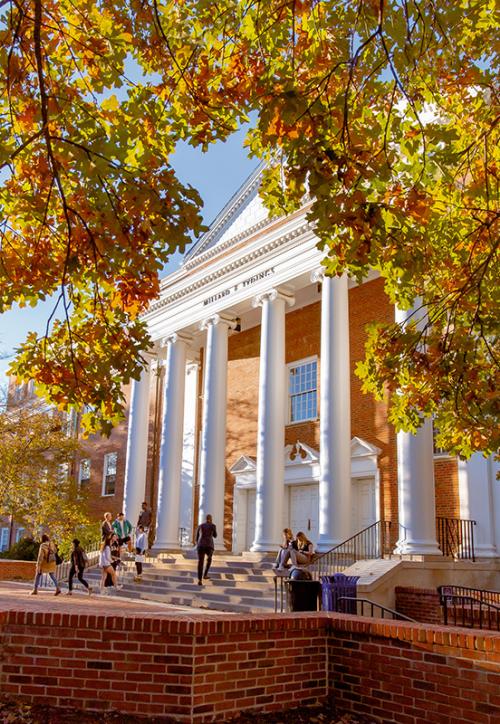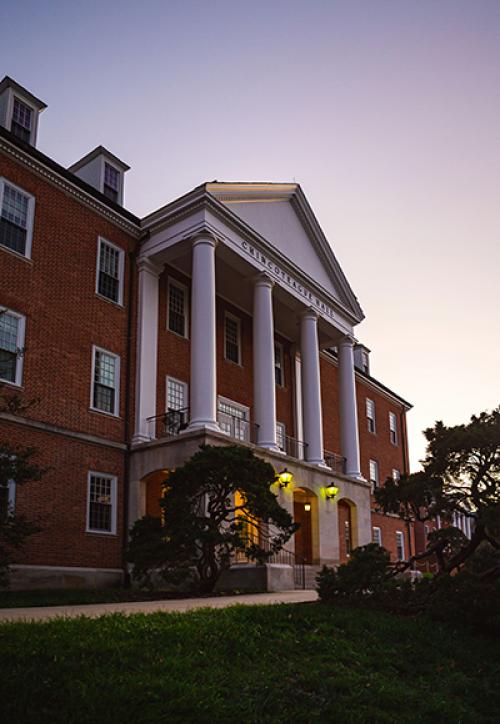GEOG Researchers Define, Measure Planet’s Total Forest Area
For the first time, a research team compared eight global, satellite-based maps to determine the planet’s total forest area; the information gaps they uncovered were surprising.
“We were amazed to find that the results varied by an area equaling 12 percent of Earth’s land surface—that’s half as large as the United States. That’s a lot of missing trees,” said Associate Research Professor of Geographical Sciences Joseph Sexton, the study’s lead author.
“Conservation policy and the measurement of forests” appears in Nature Climate Change. The report was coauthored by Sexton and scientists at the University of Maryland’s Global Land Cover Facility, the National Wildlife Federation, the Global Environment Facility and Duke University.
The researchers also discovered that the disputed areas coincide with 45 billion tons of biomass valued at $1 trillion. Given the importance of quantifying forest cover to international climate negotiations, they wondered how such a wide variance could exist among scientific estimates.
“The difference originates not so much in our technical ability to measure the forests as it does in the way we define them,” Sexton said.
Measurement uncertainties remain in many challenging areas—especially those perennially obscured by clouds. But citing technological advances led by the NASA Earth Science Program, the authors note that this imprecision will shrink over time by “an increasing breadth of sensors providing greatertemporal frequency, more accurate reference measurements, and better penetration of clouds.”
The eight datasets each reported a high level of precision, so next the authors checked their most fundamental assumption—what it means to be a forest. The United Nations Framework Convention on Climate Change—the international body responsible for climate governance—allows countries to define forests as parcels of land exceeding a threshold of tree cover, measured as a percentage. The team applied this range of thresholds to the world’s first global, high-resolution dataset of tree cover. Differences resulting from the definitions were concentrated in the planet’s sparse forests, shrub lands and savannahs, and they coincide precisely with uncertainty among the independent sources.
“This was no mere academic dispute. This failure to communicate covers a huge expanse of the terrestrial biosphere,” said coauthor Stuart Pimm, Doris Duke Professor of Conservation Ecology at Duke. The various datasets had been using different definitions. Each was aiming precisely, but at a different target.
Led by the NASA Earth Science program, a fleet of Earth-imaging satellites now stream terabytes of data daily to ecologists, hydrologists, climatologists, and economists who use the data to study the global ecosystem. The American satellites are increasingly being joined by sensors launched by European, Chinese, and other nations’ space agencies. Even private companies, from Google to “microsatellite” tech startups, have joined the effort.
With the problem identified and mapped, the scientists offer a solution.
“We [the science and policy communities] must refine our focus from the abstract concept of forests toward the ecological attributes used to define them,” Sexton said. “To understand the forces impacting forests globally, and to sustain the services they provide, science and policy must now communicate in more measurable terms. Our language has to keep pace with the science.”
Photo: A ridge-top bristlecone pine forest in the Spring Mountains of Arizona. Here, limited water and soil depth combine to keep the forest canopy sparse; an example of where forest definition clarity is essential in the Western U.S.
Credits: Joseph Sexton, University of Maryland
Published on Mon, Oct 5, 2015 - 3:20PM



